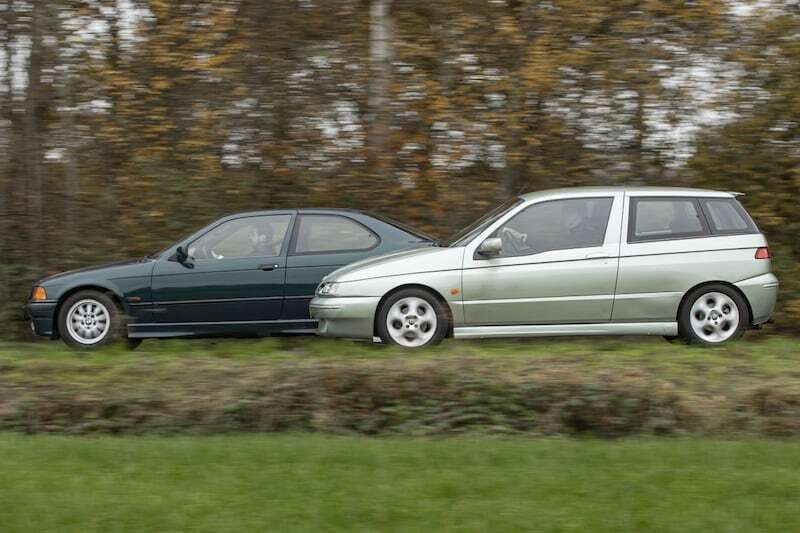
Over thirty years ago, BMW came up with the brilliant idea of shortening the 3-series, which led to the introduction of the Compact in 1994. A Bavarian hatchback in the Volkswagen Golf segment. Almost simultaneously, Alfa Romeo presented the 145. Then typical cars for the yuppies, now rare youngtimers. What remained is the price difference between these two.
In this Occasion double test between the Alfa Romeo 145 and the BMW 316i Compact, we came across a Compact from 1994 with 145,000 kilometers on the clock that was for sale for €8,850. The 145 is also a basic version, an example from the last production year of the model: this one from 2000 was for sale for €2,750 with 81,300 km on the clock.
How basic was a BMW 3-series Compact as a 316i?
To start with money right away: a 316i Compact cost a thousand guilders more than a Volkswagen Golf GTI in 1994. Compared to a 316i N sedan, the price difference was six thousand guilders, a significant difference. A ‘normal’ 3-door hatchback with a 1.6-liter engine was priced at around 32,000 guilders, based on a VW Golf, Opel Astra or Ford Escort. In short, for its size, the 316i Compact was a pricey car. But hey, you drive the same brand as your director with his 7-series.
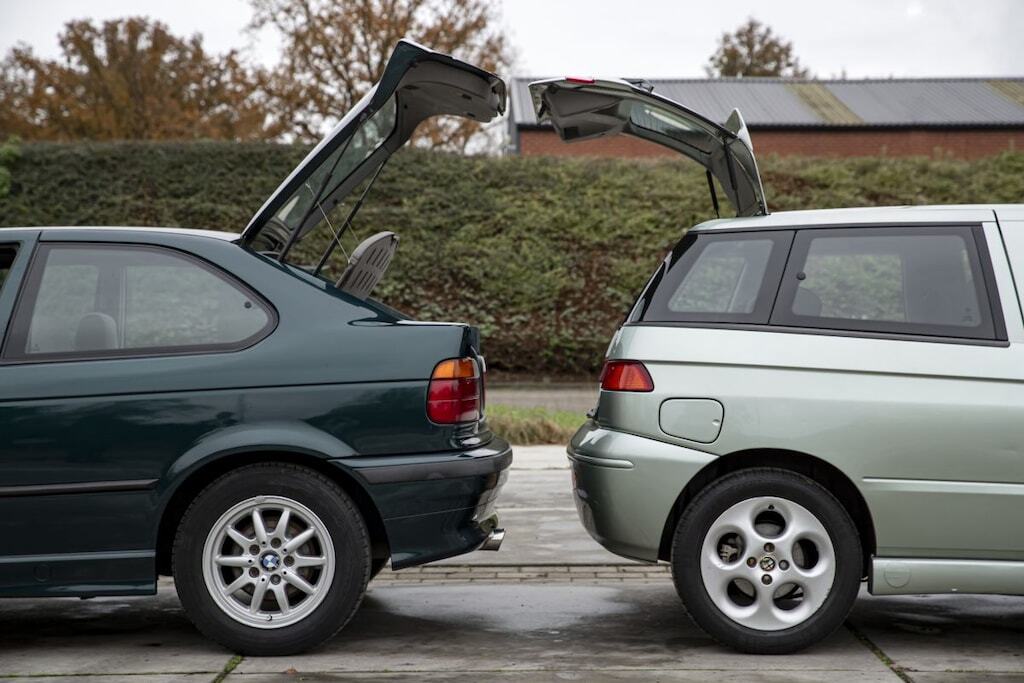
Alfa Romeo 145 was much cheaper than the 3 Compact when new
At Alfa Romeo, you didn’t have to dig as deep to become the owner of a 145. In the early period, it had a boxer engine, just like the Alfasud. The entry-level model, a 1.4 with 90 hp, was fourteen thousand guilders cheaper than the BMW Compact and cost about the same as a three-door Opel Astra 1.6i. Even the purchase price of the first top model, the 1.7 16V with 129 hp, remained well below that of the BMW.
A year after the introduction of the 145, the five-door 146 appeared. The boxer engines disappeared from the program from 1997 to make way for four-cylinder in-line engines with double ignition, the Twin Spark. Speaking of engines: BMW also offered the 318ti, with a 140 hp 1.8-liter sixteen-valve. But the finest is the 323ti with a 2.5-liter six in line, good for 170 hp. Incidentally, Volkswagen was already present with the Golf VR6 with a six-cylinder in a hatchback; that debuted in 1991. BMW and Alfa Romeo also supplied turbodiesels in the Compact and the 145, in both cases with 90 hp.
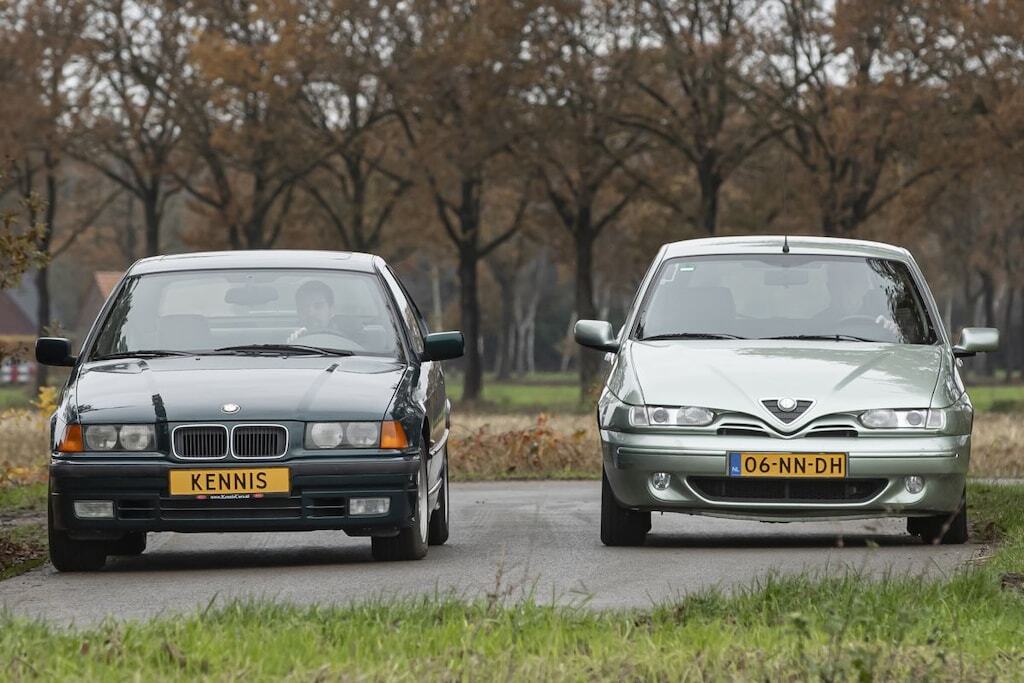
Different rear axle than E36
The Compact looks like a 3-series with a piece chopped off, and that’s essentially what it is. It is not a beauty and that is an understatement. The body is 21 centimeters shorter than that of the sedan, the wheelbase remained unchanged at a distance of 2.70 meters. We are talking about the third generation Three, the E36, which is available as a four-door sedan, Touring, Coupé and Cabriolet. Each of these is many times more pleasing to the eye, while the proportions seem a bit off with the Compact. A remarkable detail is the position of the fuel filler flap, which is low in the right rear screen, between the wheel and the door. Bend over when you have to refuel.
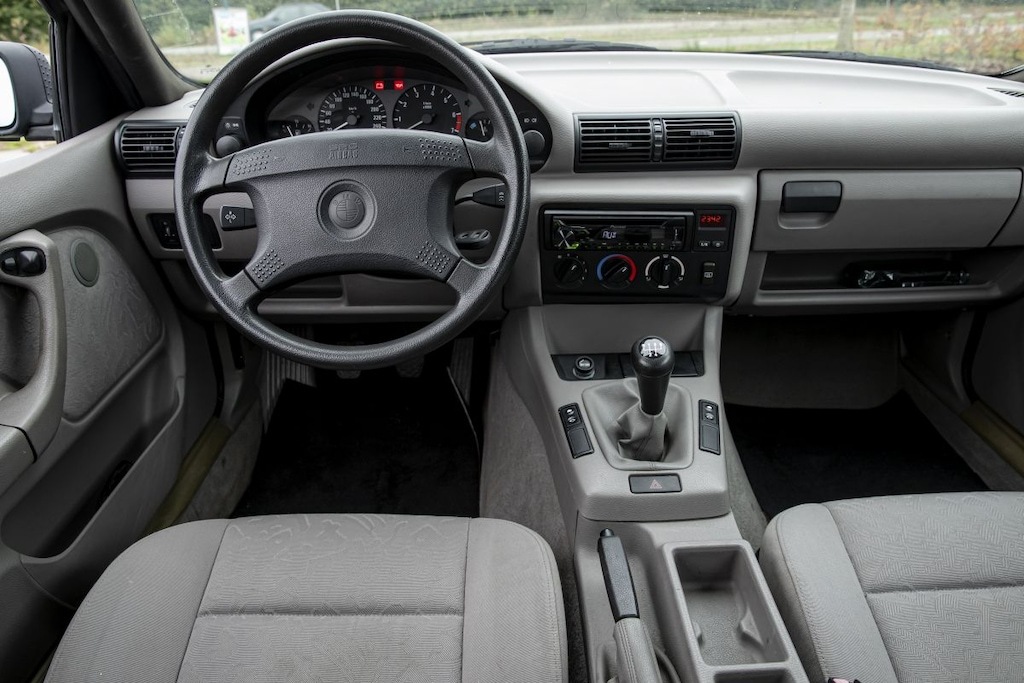
Different dashboard than in normal 3-series
The design of the dashboard differs considerably from the regular Three, as does the rear suspension. The Compact does not have the multi-link rear axle of the Z1 and E36, but a modified version of that from the E30, the previous 3-series. That is simpler in design. It will have to do with saving space and costs. We know the levers on the steering column, the control panel of the climate control and the round ventilation grilles from the E34 5-series, the pull switches for the lighting and the fog lights are reminiscent of the Z1.
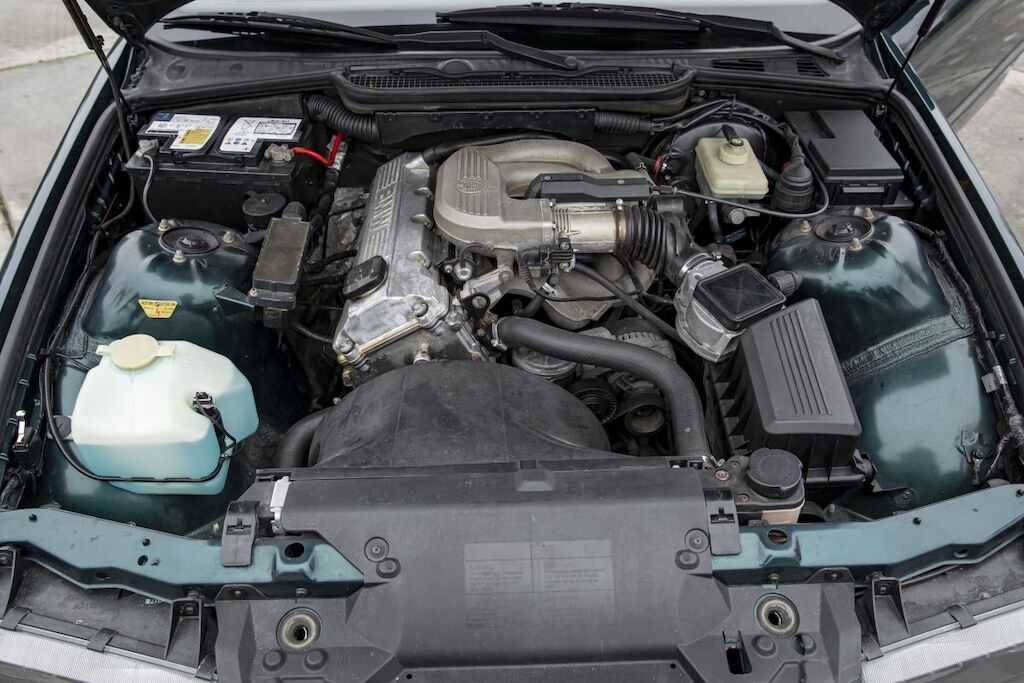
The 1.6-liter four-cylinder is lively, we notice. It reacts spontaneously and willingly to the accelerator pedal and is pleasant to the ear. The five-speed gearbox shifts excellently, with the gear stick close to the mechanism. The steering is power-assisted, but certainly not too strong and contributes to the driving pleasure. The compact BMW moves sporty over a winding road and puts a smile on your face.
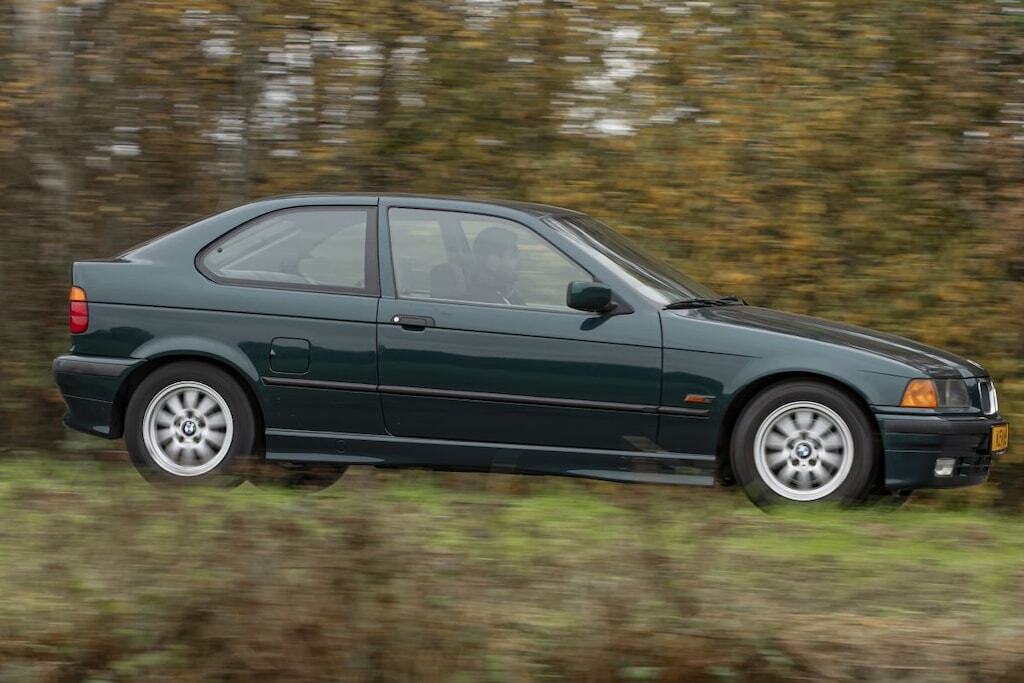
Of course, it is not lightning fast with its 102 hp, that will not surprise anyone. But there is also such a thing as speed experience and in that area it is fine. And as you can expect from a BMW – even from an entry-level model – work has been done on suspension and damping. The Compact does not punish its sporty character with an irritatingly hard suspension. Far from it, it even feels a bit comfortable and you recognize the genes of his longer brother with four doors. Behind the wheel you sit fine, in the back seat there is little legroom, that will not surprise anyone.
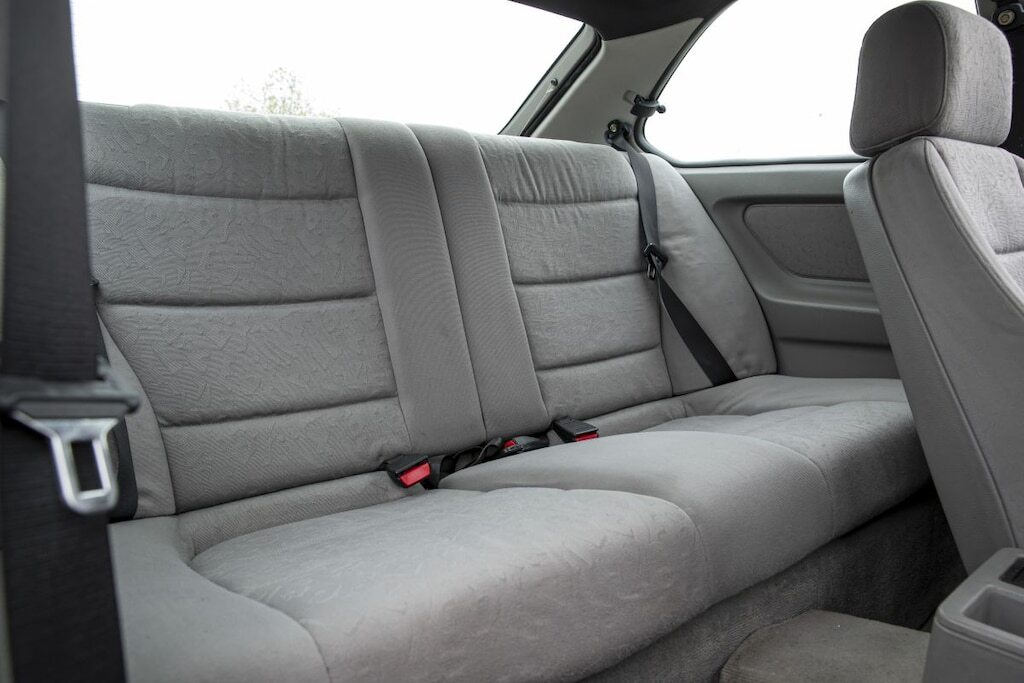
Italian temperament in the Alfa 145
With its concept, size and price, the Alfa Romeo 145 may have operated in the segment of the Astra and Golf at the time, but the design differs greatly from those two German hatchbacks and in terms of appearance it does not have to be ashamed next to a BMW Compact. The Alfa is more of a shooting brake and also has something of the Volkswagen Polo ‘Steilheck’ from the 80s in the distance. A visible C-pillar is missing, which is included in the rear side windows. Or what about that remarkable kink halfway through the window of the front door?
At the rear we see the same type of rear light as with the last Alfa 33 and as soon as you open the tailgate, you discover another curiosity. Because it continues into the roof, just like later with the 156 Sportwagon. A sharp fold in the flanks connects the front light units with the rear ones. The front is very recognizable Alfa Romeo, not least because of the Scudetto in the middle. The bumpers were originally black, from the last facelift they are in body color.
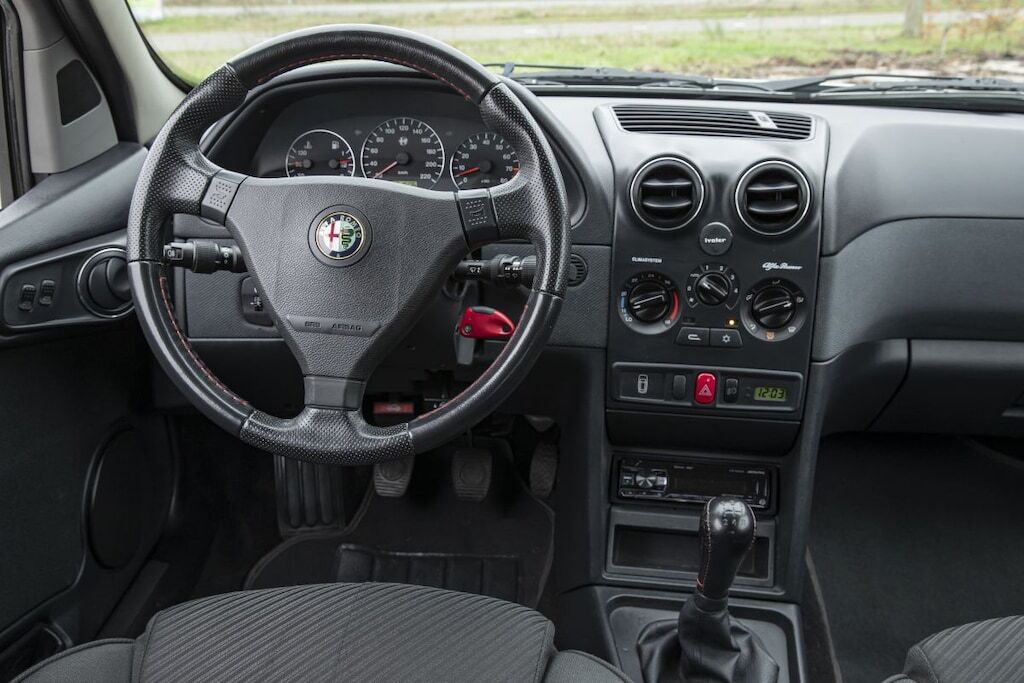
The interior is also not everyday. The seats look mature and the dashboard is beautifully designed. We recognize the multifunctional levers on the steering wheel from the Fiat Tipo. A tachometer and five-speed gearbox are not missing, nor is an airbag for the driver and two headrests in the back seat. The outer ventilation grilles are in the doors and there is even a kind of automatic climate control. The radio is at the very bottom of the center console, a far from ideal position. You sit remarkably high behind the wheel, that takes some getting used to.
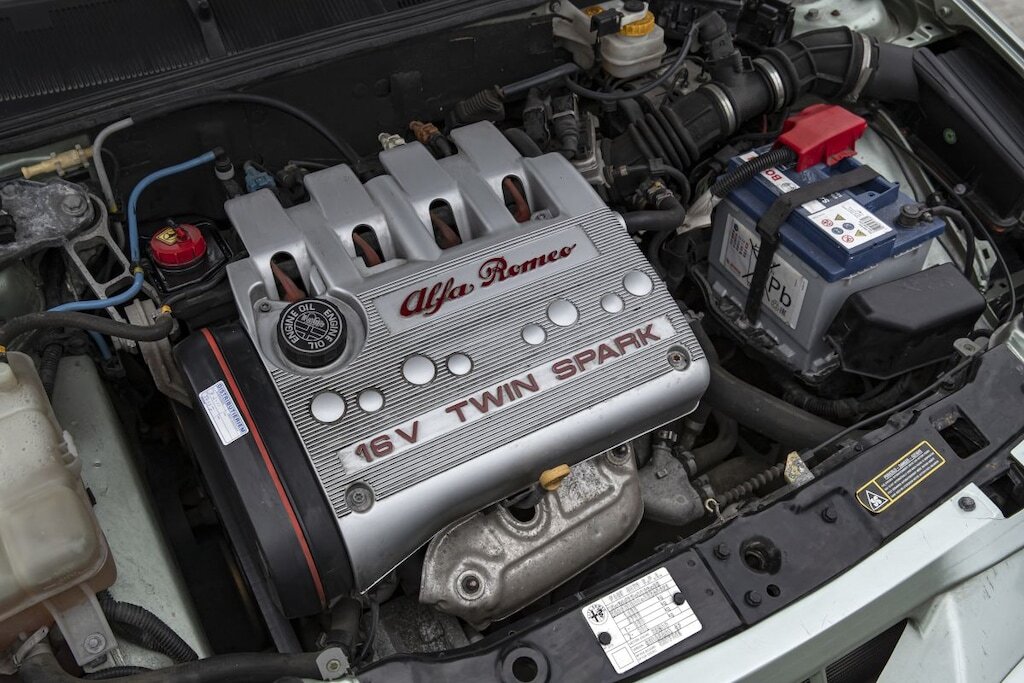
Alfa nice and direct
The 1.4-liter four-cylinder with eight spark plugs has the Italian temperament you would expect. And that’s how it should be in an Alfa Romeo, the engine is an important part of the driving experience. The steering has a little more weight than that of the BMW and works especially much more directly. That is also typical of an Alfa Romeo. You notice that the engine has less content in the pulling power at the bottom. He prefers to rev a little more and is then really in his element, helped by the adjustable camshaft. The chassis is stiffer than that of the Compact and therefore less comfortable. If you were to throw him through a bend to the limit, he is more likely to be understeered than his German opponent, but even with that car, the front wheels are the first to throw in the towel.
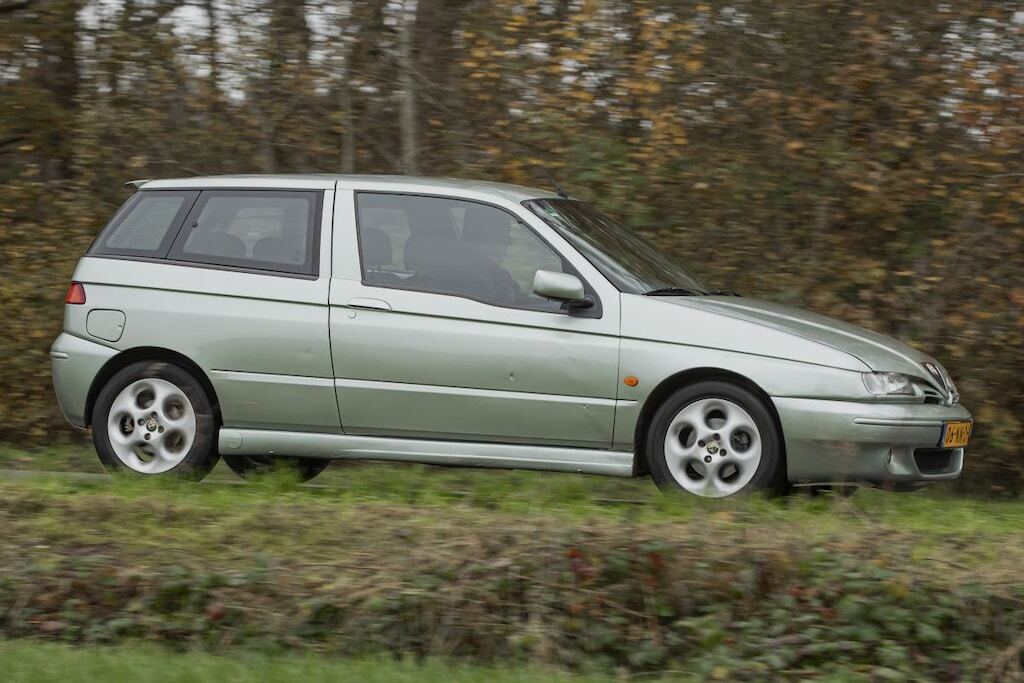
The Italian hatchback is considerably cheaper than the BMW and that has its reasons. First of all, because the Compact is for sale at a classic car dealer and the 145 at a private individual. In addition, a used Alfa Romeo is generally less popular and that also lowers the price. Furthermore, there is something cosmetically to be noted on the Alfa 145 that appears here. Its low mileage speaks in its favor, even though it is not 100 percent watertight because a NAP is missing.
The BMW also does not have that NAP. And also with the German, some dots have to be put on the i, especially in the interior. Its sliding roof is a welcome option, given the lack of air conditioning. The technology of the 316i is robust. This generation already has a timing chain and no technological jokes such as variable valve timing, direct injection or Valvetronic. That all came later. The downside is that the power is modest, but you get something in return for that.
The engine of the Alfa 145 does have camshaft adjustment and that part can give up the ghost. That can be heard, but it is not a disaster since repair does not cost a fortune. The eight spark plugs have a long lifespan, but replacement can be costly if you opt for the original specimens. And then there is the timing belt that you have to replace every now and then. Furthermore, the fixed and variable costs are about the same.
Enough brand specialists
There are now enough brand specialists who can maintain youngtimers like these at somewhat affordable rates. You cannot always go to brand dealers with old cars and if you can, you pay hefty hourly rates and sometimes lack the specific knowledge to quickly locate certain, common faults. Please note, there will certainly be exceptions, but be selective when choosing a garage for maintenance and repair and listen to the internet forums and brand clubs.
Competitors
What BMW can do, we can do too, they thought in Ingolstadt. In 1996 a compact Audi came on the market: the A3, on the chassis on which the Golf IV would later appear. The entry-level A3 has a 1.6-liter engine and the top of the range from 2000 is the S3 quattro with 210 hp. In 1999 Audi presented the five-door A3.
Lancia Delta HPE 1.6 16V (103 hp)
The second generation Lancia Delta came on the market in 1993 with a five-door body, two years later followed the three-door which is listed as HPE in the price list. The basic engine is a 1.6 16V, but it is also supplied with the 1.8-liter engine that we know from the Fiat Barchetta. A turbo engine should not be missing and the thickest HPE is the HF 2.0 Turbo with 186 hp.